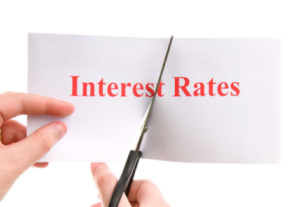The Bank of Canada (BoC) reduced the overnight rate by 25 basis points this morning, bringing the policy rate down to 2.75%, within the neutral range of 2.25%—2.75%. Tariff tremors have already led to a decline in consumer confidence and spending, a weakening labour market, and a decline in business investment. Compound that with falling population growth, and you see why the Governing Council took the overnight rate down again even though they state that monetary policy cannot offset the impacts of a trade war.
Trade wars lead to higher prices and slower growth. The rise in prices causes consumers to tighten their belts, concerned about the impact of tariffs on their income and investments. Today, there is a 25% tariff on steel and aluminum exports to the US. This impacts Canada the most as it supplies roughly 80% of US aluminum demand. The EU introduced retaliatory tariffs on US goods in response. Canada added to its retaliation. Recent data suggest the US economy is slowing.
Monetary policy remains restrictive as the real overnight rate (2.75% minus the headline inflation rate) is 85 bps, up from the historical average of 60 bps. Five-year Government of Canada bond yields increased on the news to 2.65% compared to 4.05% in the US. The Federal Reserve is not expected to cut rates when it meets again this month.
Despite relatively strong GDP growth in Canada in the second half of last year, home sales and hiring began to slow in late January due to tariff threats, and more tariffs are yet to come. On March 20, China is expected to impose 100% retaliatory tariffs on Canadian canola oil, while pork and seafood will face a 25% levy. The Chinese tariffs are a push-back against Canada for imposing a 100% levy on electric cars from China and 25% on steel and aluminum.
On April 2, the US announced it will impose reciprocal tariffs on nations that have levied tariffs on US goods. President Trump has also said he is considering imposing retaliatory tariffs on Canadian dairy and lumber.
“We’re now facing a new crisis. The economic impact could be severe depending on the extent and duration of new US tariffs,” Macklem said in his prepared remarks.
Macklem called the uncertainty of the tariff dispute “pervasive” and said that it was “already causing harm.” Officials said the “continuously changing” US tariff threat was hitting consumers’ spending intentions and limiting businesses’ plans to hire and invest.
At the same time, Macklem said the bank “will proceed carefully with any further changes” to borrowing costs, and officials would “need to assess both the upward pressures on inflation from higher costs and the downward pressures from weaker demand.”
Bottom Line
These are uncertain times. The US is determined to impose worldwide tariffs, disproportionately hitting Canada, Mexico, and China, the US’s top trading partners. This is a misguided neo-Mercantilist policy. Mercantilism assumes that the global economic pie is fixed, so if one country prospers, another must fail. This idea of a zero-sum game was debunked in the 18th century by Adam Smith and others who showed that if countries have a competitive advantage in various products and services, all are better off by producing and trading those products with the rest of the world. It is not a zero-sum game. The economic pie grows with trade. This was the idea behind globalization and the USMCA free trade agreement.
Given Canada’s vulnerability to tariffs, the economy will suffer more than the US, which has a relatively closed economy (where exports are a small proportion of GDP). Prices will rise depending on the duration and size of the coming tariffs, but mitigating the inflation will be the weakness in economic activity. Stagflation, a buzz-word in the 1970s, is back in the lexicon.
We expect the BoC to continue cutting the policy rate in 25-bps increments until it reaches 2.25% this June, triggering a rebound in home sales. Layoffs and spending cuts will dampen sentiment, but lower interest rates will bring buyers off the sidelines.
Chief Economist, Dominion Lending Centres



